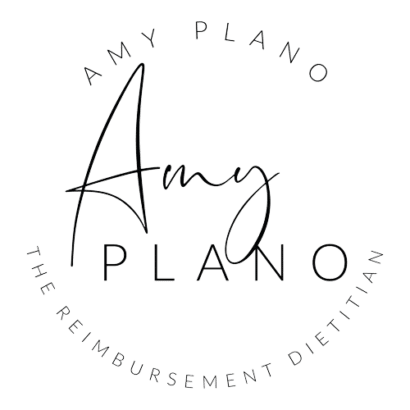Billing Insurance as an Out-of-Network Dietitian: What You Need to Know About Superbills
Today’s hot topic: billing insurance as an out-of-network dietitian and how superbills come into play.
Superbills can be incredibly helpful for dietitians working with clients whose insurance plans you’re not credentialed with.
But here’s the catch—they’re more complex than most RDs and CNSs realize.
The patient still needs to understand their out-of-network (OON) benefits, and even then, reimbursement is not guaranteed.
What Is a Superbill?
A superbill is a detailed document (like an invoice) outlining the services provided during a patient visit.
It includes:
- Dates of service
- CPT codes for the services rendered
- ICD-10 diagnosis codes (if documented by a diagnosing provider)
- The fee charged for each service.
Patients can submit this form to their insurance company along with a claim form to get reimbursed for their nutrition services.
If you’re billing insurance as an out-of-network dietitian, the superbill is your client’s only tool to attempt reimbursement. You can’t submit claims for them—you’re out of network.
When Can You Provide a Superbill?
This is key.
You can only provide a superbill if you are truly out-of-network with the patient’s plan.
- ✅ You’re out-of-network → You can provide a superbill.
- ❌ You’re in-network → You must submit claims on the patient’s behalf.
- 🚫 You’re in-network, but their benefits are exhausted or not covered → There is no superbill because you’re still technically in-network, and the service isn’t reimbursable.
Note: Medicare doesn’t accept superbills, so skip it entirely with those patients.
Will the Patient Get Reimbursed?
The million-dollar question. And the answer?
It depends.
When billing insurance as an out-of-network dietitian, reimbursement is based entirely on the patient’s OON policy.
Some plans have:
- High OON deductibles (mine is $8000!)
- Limited coverage
- No OON benefits at all
Insurance might reimburse them for sessions with you only after they meet their OON deductible and cost-sharing requirements.
What Diagnosis Codes (ICD-10) Can You Use?
Here’s a big mistake many dietitians make when creating superbills: using random ICD-10 codes without documentation.
We can’t diagnose.
Even if we know the patient has diabetes or celiac, we can’t slap that on a superbill unless it’s been officially documented by a diagnosing provider.
To successfully navigate billing insurance as an out-of-network dietitian:
- Use diagnosis codes that are documented in the patient’s medical records.
- Know what codes are accepted by different plans.
- Understand how preventive vs. medical coverage affects reimbursement.
👉 Want help with this? Check out my ICD-10 Cheat Sheet here.
Final Thoughts
Providing superbills sounds simple, but it’s more nuanced than it looks. You can’t just toss “Z71.3” on every form and expect magic.
Reimbursement depends on what’s covered, the documentation, and how well the superbill is filled out.
So, if you’re committed to billing insurance as an out-of-network dietitian, ensure you’re doing it right, from coding to communicating expectations with patients.
Do you need a free PDF that explains how to fill out a superbill step by step?
Click HERE to grab it.
As always, I’m cheering for YOU!



Reader Interactions